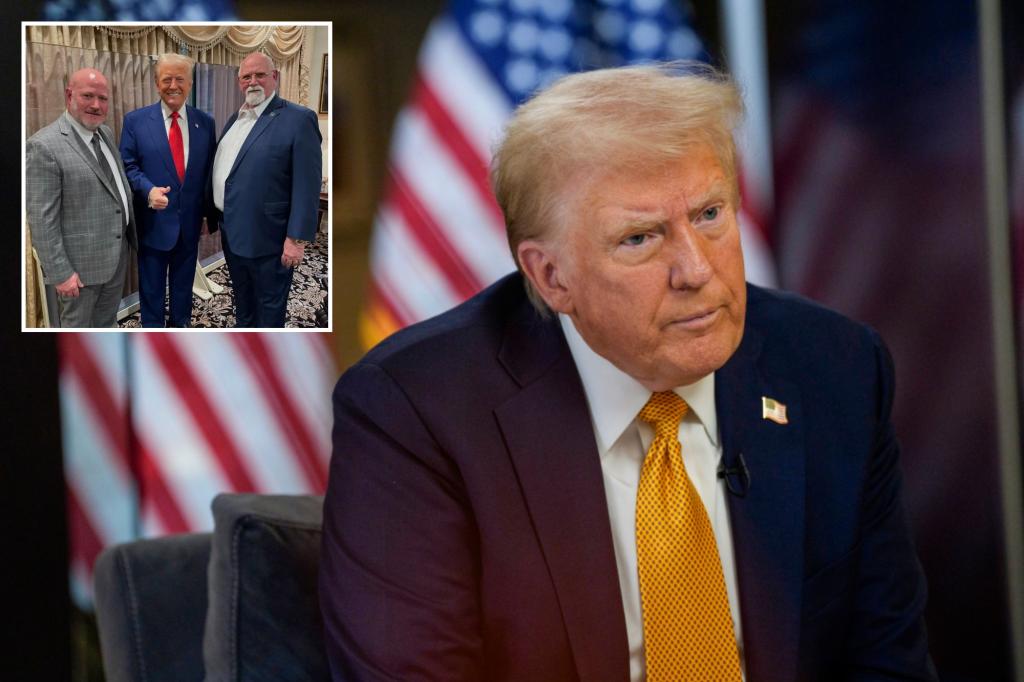Dennis Daggett, a prominent labor leader and executive vice president of the International Longshoreman’s Association (ILA), expressed unexpected admiration for President-elect Donald Trump’s commitment to the working class. Following a meeting with Trump, Daggett, whose union had recently engaged in a port shutdown strike, publicly lauded Trump’s stance on labor issues, a move that surprised many given the ILA’s historical support for Democrats and the Republican Party’s traditionally strained relationship with unions. Daggett emphasized Trump’s genuine concern for workers and his willingness to address the threat of automation, a key concern for the ILA. This marked a significant shift in the political landscape, with a prominent union leader publicly praising a Republican president-elect for his pro-worker stance.
The meeting between Trump and the Daggetts, including ILA president Harold Daggett, focused on the union’s ongoing negotiations with the US Maritime Alliance, representing port operators and shipping lines. A central point of contention was the increasing use of automation in the industry, which the ILA viewed as a major threat to its members’ jobs and livelihoods. Trump’s responsiveness to these concerns, according to Dennis Daggett, was remarkable, demonstrating a level of engagement rarely seen from politicians. Trump’s subsequent public statements on social media further solidified his position, acknowledging the negative impact of automation on American workers, particularly longshoremen, and criticizing foreign companies for exploiting US markets while contributing to job losses. This public affirmation of the ILA’s concerns resonated strongly with the union leadership.
The ILA’s strike in October, the first in nearly five decades, stemmed from stalled negotiations over wages and automation, raising concerns about potential disruptions to supply chains. The temporary deal reached after three days extended contracts until January 15, allowing for further negotiations. Trump’s intervention in the issue, by acknowledging the union’s concerns about automation and pledging to protect American workers, signaled a potential shift in the Republican Party’s approach to labor relations. Historically, Republicans have often viewed unions with skepticism, fearing that their negotiating tactics could stifle job growth and economic prosperity. However, under Trump’s leadership, the party has increasingly appealed to working-class voters and adopted a more protectionist stance on trade, creating an opening for unexpected alliances with labor groups like the ILA.
Trump’s outreach to the labor movement extended beyond the ILA. His invitation to Teamsters boss Sean O’Brien to the Republican National Convention in July marked an unprecedented moment, as it was the first time a Teamsters leader had addressed the convention. This overture was followed by the Teamsters’ decision in September to abstain from endorsing a Democratic presidential candidate for the first time in nearly three decades, a decision influenced by internal polling data revealing substantial support for Trump among rank-and-file members. While this move drew criticism from some within the Democratic Party and some local Teamsters chapters who endorsed Vice President Kamala Harris, it underscored the growing appeal of Trump’s message to working-class voters across traditional political lines.
The shift in the Republican Party’s approach to labor under Trump’s influence is also evident in his cabinet appointments. The selection of Rep. Lori Chavez-DeRemer (R-Ore.) as the nominee for Secretary of Labor further signaled a potential change in direction. Chavez-DeRemer’s sponsorship of the Protecting the Right to Organize Act, a bill that strengthens protections for workers joining unions and challenges certain aspects of state right-to-work laws, distinguishes her from most of her Republican colleagues. This choice suggested a willingness on Trump’s part to consider policies that traditionally favor unions, potentially creating a more complex and nuanced relationship between the Republican Party and organized labor.
In essence, Trump’s engagement with the ILA and other labor groups represented a departure from traditional Republican orthodoxy. His willingness to address concerns about automation, his outreach to union leaders, and his nomination of a pro-labor congresswoman for a key cabinet position signaled a potential realignment of political forces. By acknowledging the anxieties of working-class voters and emphasizing the importance of protecting American jobs, Trump forged unlikely alliances and challenged long-held assumptions about the relationship between political parties and organized labor. This strategic shift potentially reshaped the political landscape, opening up new avenues for dialogue and cooperation between Republicans and unions, while also creating friction within the Democratic Party’s traditional labor base. The long-term implications of this evolving political dynamic remain to be seen.


